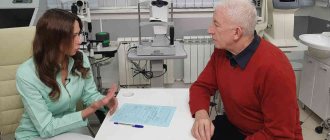Self-hypnosis is the ability of a person to suggest to himself (usually in a trance state), using thoughts, images, ideas, imagination and visualization, some specific attitudes of a positive or negative nature. Another name for this is the placebo effect.
Often there is unconscious self-hypnosis for diseases or, on the contrary, self-hypnosis for recovery, increasing self-confidence, implementing plans, and so on.
Self-hypnosis: what is it?
As you can see, experts from various industries offer it as an alternative to conventional methods. And they explain: self-hypnosis is a process of reassurance addressed to oneself. With its help, the level of self-regulation increases, which allows a person to evoke certain emotions, skillfully manipulate memory and imagination, and control somatic reactions. In a word, this is one of the forms of so-called mental control of oneself, one’s own body and feelings.
Self-hypnosis is especially helpful against diseases: using its various methods, patients overcome internal negative attitudes, while helping professional therapy aimed at healing. They are taught to convince themselves that the illness will definitely recede and that they can get rid of it easily and forever. Doctors say: confidence reaches such a high level that even seriously ill people begin to get better just before our eyes. Their depression goes away and their strength is restored to fight for life.
Basics of self-hypnosis
To use autosuggestion effectively, you first need to become familiar with its basics. Below we give you the rules, compliance with which in this matter is mandatory if you want to get the desired result:
- Be 100% confident in the final action. The presence of doubts calls into question the effectiveness of the technology. The presence of your fears and prejudices can prevent you from achieving your goal, which will ultimately result in complete failure.
- Positive thinking. If you use the particle “not” in your speech, your brain automatically begins to be programmed to defeat. Therefore, it is necessary to try to formulate your judgments in such a way that they do not contain negative formulations. For example, you decide to lose weight, and if you have a desire to eat something harmful, you convince yourself that you don’t feel hungry. But soon you will feel a treacherous nausea. It would be more correct to convince yourself that you are currently full and feel great.
- Don't force yourself. If you resort to coercion, you will face constant internal conflict. And fighting with yourself is the worst thing you can imagine. Therefore, do not try to force yourself, but try to use persuasion to find a compromise.
- Focus on the present. You will never correct the mistakes of the past, and thinking about the distant future is also not very effective. Therefore, put the right emphasis on the present - concentrate on this moment.
- Give yourself the right attitudes. It is important that they are short and succinct, while being clearly and precisely formulated. If you think about the formulation of your desire for a long time, it will become blurred and stop working. Try to repeat your settings more often.
What can be achieved?
Self-hypnosis treatment is as old as the world. Even ancient thinkers - Aristotle, Plato and Hippocrates - noticed the peculiarities of the impact of his thoughts and words on human health. They found out: the more impressionable and emotional a person is, the faster and more effectively the principle of self-hypnosis acts on him. In addition, children lend themselves well to indoctrination: being too receptive, they react quickly to the situation, adapt without problems and are influenced.
Such individuals are the easiest to work with, doctors say. Self-hypnosis can actually achieve positive changes in their body, which is confirmed by clinical tests. For example, if a patient convinces himself that he is hungry, his level of leukocytes in the blood immediately changes. And an individual who imagines cold and winter develops so-called goose bumps, the temperature drops, and gas exchange accelerates. If you conduct self-hypnosis sessions every day, you can subjugate all the important functions of the body.
Autotraining
This technique is used to overcome stress and transform negative experiences; it is also called autogenic training. Any stress leaves an imprint on our consciousness, changes further behavior in similar situations, and can cause very real physiological changes in the body. Autogenic training was developed by Johann Schulz as a therapeutic technique in psychology. Its essence lies in the adoption of a certain attitude, which is called autogenic modification. It should be positive, short, simple, and evoke positive emotions in you. First you need to relax, feel the processes of your body - the heaviness of the muscles, the distribution of heat, the rhythm of the heartbeat, breathing, the coolness in the forehead. Next, you need to say to yourself this very autogenic phrase, which should reflect what you want in the present tense, as if you have already achieved it: “I am productive, full of strength, energy, ideas.” Having convinced yourself of this, you need to gradually return from training. Feel calm, confident, feel your inner strength, and get ready for further actions after training.
Cause of diseases
Where do ailments come from, if you can get rid of them so easily - by the method of ordinary suggestion? Is it really our spiritual world, and not the physical body, that is the main reason for their occurrence? Indeed, it is so. Many diseases begin to destroy our body, forming as the consequences of a painful imagination, which can be cured absolutely with the help of phrases and thoughts. Psychologists say: sentences during such a kind of auto-training must be short, they should be pronounced in the first person, without using the negative particle “no”.
If you construct the text correctly, self-hypnosis against diseases will work with a bang. The main thing is that your speech contains affirmative phrases “I can...”, “I am strong...”, “I will definitely overcome...” and so on. The voice must be firm, confident, even tough. Thus, a person will not only cope with the disease, but also revive his performance, improve his well-being, increase self-esteem and correct his mood.
HOW TO GET RID OF NEGATIVE SELF-SUGGESTION
As you understand, self-hypnosis can greatly complicate our lives; it increases our sensitivity to the words of others and makes us more vulnerable. But there is also a positive point - this problem can be solved. To do this, you need to accept one truth, the people who surround us are not to blame for your troubles, and the key to solving these problems lies in ourselves.
First you need to accept your problems. Find the true source of all failures and misfortunes. In order to find it, the method of scrolling through past events helps. Using this method, you need to find the starting point when a negative image has taken hold in your mind, causing you to doubt your abilities.
Change your memories. When you find the point that triggered the negative memory, you need to imagine this situation, but in such a way that it turns into a positive one. Think about how it would be different if you or other people acted differently. Fill yourself with these positive feelings, believe in new events so that a positive situation is recorded in your subconscious.
In this way, you can work on all negative memories until they are replaced with positive emotions.
If some situation in the past has left a strong negative imprint that you cannot cope with on your own, in this case it is better to contact a professional psychotherapist. Self-hypnosis can greatly change your life and perception of the world in general. Do not be afraid of a specialist who, using effective and proven techniques, can help you achieve a comfortable state and get rid of fears.
For what diseases is self-hypnosis most effective?
It is clear that you will not be satisfied with auto-training alone. If you do not take medications prescribed by a doctor, avoid necessary procedures and do not adhere to a daily routine, no words can heal the patient. Phrases can only be an addition to the main therapy. In this case, they will become effective, especially in the following situations:
- During a long-term or chronic illness.
- When a person undergoes rehabilitation after an accident, injury, or heart attack.
- The patient has been suffering from psychological problems, neuroses, and depression for a long time.
- He was diagnosed with bronchial asthma, cancer, gastritis, sexual dysfunction, angina pectoris, and so on.
A competent attitude in self-hypnosis against a specific disease is a powerful weapon for the patient. The best time to practice is late evening or early morning. During these periods, a person is relaxed, in a half-asleep state, and his brain is least excited, and therefore more open to the perception of fresh and necessary information.
The power of self-hypnosis: examples from life
There are many examples from life that demonstrate the power of self-hypnosis. Initially, we will consider a theoretical example, and then we will talk about real facts discussed by many historians.
How the power of thought could hypothetically operate. A simple example that has happened to almost everyone. For example, you are walking down the street and see a dog on the side of the road. She is quite impressive in size and looks at you carefully. It’s a rare person who will pass by without reacting internally to this circumstance. At first we are confused, then we continue on our way, convincing ourselves: “I’m not afraid of her, I’ll calmly pass by, and she won’t touch me. I don’t care about her, and she doesn’t care about me.” We pronounce approximately these phrases mentally. This is self-hypnosis. If we don’t connect it, but are really afraid of the dog, then we’ll hardly be able to take even one step. Self-hypnosis pushes us.
Remembering examples of self-hypnosis, many psychologists periodically talk about the actor I.N. Pevtsov. He had an unenviable feature for an artist: a stutter. However, when going on stage, Pevtsov seemed to forget about his speech impediment - it simply disappeared. Illarion Nikolaevich inspired himself, going on stage, that he was a different person - a character. Since in the story the hero didn’t stutter, Pevtsov didn’t do it either - it’s as simple as that! .
Many years ago, the French doctor Motier decided on an interesting experiment, telling patients that a medicine would soon be delivered from Germany that would quickly cure tuberculosis. At that time, the disease was not treated. The doctor's words had an amazing effect on the patients - they did not allow the idea that the doctor was making things up. The power of suggestion turned out to be incredible: many patients felt relief after taking the “medicine”, and others were even healed. The placebo effect in action! In reality, Motier offered ordinary water to the sick. Subsequently, the doctor’s experience was repeated by other specialists, and systematically these experiments demonstrated impressive results. Many scientists still argue about this feature, but the fact remains that self-hypnosis works in different areas of life.
The Placebo Secret
Considering all of the above, doctors began to actively use suggestion. They came up with a placebo - a so-called dummy (solution, injection or tablet) that does not contain drugs. They were given to patients, assuring them that with the help of a miracle cure they would definitely be able to overcome their illness. Taking a placebo, people actually got better - this was the effect that self-hypnosis had on recovery. The American anesthesiologist Henry Ward Beecher first used a pacifier in 1955. He fed simple sugar pills to patients, telling them they were powerful painkillers. And indeed, in a third of cases, the pain went away and people felt better.
Or, as an example, we can cite the practice of the Italian doctor Fabrizio Benedetti. He treated for Parkinson's disease, but instead of the usual medicine he gave the patients a solution of table salt. The effect was similar: most people experienced positive dynamics. It is clear that before the start of such an experiment, doctors weighed the pros and cons and held consultations so as not to harm the health of the subjects.
Self-hypnosis: principles of work, its power
A kind of implantation of a certain command phrase or attitude in a trance state into one’s own brain is self-hypnosis. In other words, these are certain formulations repeated out loud or silently to inspire oneself with goals that need to be achieved (become slimmer, get better, quit smoking, learn something new, etc.).
Interestingly, this works in one situation, but not in another. Self-hypnosis has truly great power. Many believe in it and use it for their own benefit, fulfill their desires and dreams, and achieve their goals. By the way, for some reason negative thoughts are easier to inspire than positive ones.
How to suggest correctly? There are certain principles:
- The phrase you mentally pronounce to yourself should be briefly and clearly formulated in the first person in an affirmative form (you cannot use “not”).
- When making wishes, you need to imagine them already coming true in reality (visualize the setting).
- Belief has a strong and more effective effect on a person in a state of complete relaxation.
- You should remember the importance of completely concentrating your subconscious on your goal.
Methods: their types and features
Self-hypnosis has a whole arsenal of techniques. You can use:
- psychological attitude - suggesting the need to enter a state of positivity and find ways to solve vital issues, isolating oneself from pessimists;
- affirmations - repetition of formulated phrases, replacing negative thoughts with positive ones;
- meditative techniques - immersion in a hypnotic state to determine goals, enter the void and feel commands within yourself that will remain in the subconscious after the process is completed;
- visualizations - always positive mental representations and experiences of imaginary events, which gives the best result due to the illegibility of our mind (the brain is able to perceive reality and imagination)
Emile Coue method
Our subconscious is capable of influencing the functioning of the body, and this influence has no boundaries. Emile Coue noticed the effectiveness of the faith of patients in healing, which is capable of a lot. The result of self-suggestion can be both positive and negative.
Self-hypnosis is used for medical purposes. The Coue technique is a healing procedure that allows you to suppress painful, negative imaginations and emotions, replacing them with useful, positive ideas. Such representations are considered therapeutic and represent statements of fact. This is how self-hypnosis acquired its formula, which claims that improvement occurs every day. An attitude in the form of a sentence is pronounced in the present tense, regardless of whether it corresponds to the reality of the person’s condition. The meaning of the phrase must be grasped by the subconscious, and it is very trusting. It accepts the installation as a task for execution.
How can we make ourselves sick?
There is self-hypnosis associated with diseases. No one will argue with the fact that our well-being depends on our emotional state and way of thinking. A person who usually has positive thoughts, emotions, and a good mood maintains a healthy body and spirit. But constant despondency, painful thoughts, and fear of diseases do not benefit your well-being. This is self-hypnosis. Medicine has evidence of this. But it can both worsen and improve our health. And every person has such a gift, but, unfortunately, not everyone can use it for their own benefit. And there can be a variety of situations when a person’s well-being depends on him. Thanks to self-hypnosis for recovery, many patients were able to overcome even serious illnesses.
Read our article “Red jasper stone against all adversities.”
How do we set ourselves up to get sick? It's actually very simple and fast. For a person who is afraid of getting sick, sometimes it is enough to notice the presence of some sign of ill health, rummage a little on the Internet and work himself up to unimaginable proportions and completely lose heart. Negative thoughts on the face and on a subconscious level can, after some time, begin to trigger programming for the disease. Then, every day the situation worsens, new symptoms appear (the person is able to imagine anything). And it’s so easy and real to get sick. Such negative self-hypnosis is possessed by people with a wild imagination that has not been put to proper use.
If something bothers you, it is better to turn to specialists, get examined, and not beat yourself up by instilling negativity. You can resort to the same self-hypnosis for recovery, using the simplest techniques of meditation, positive attitude, visualization, etc. To enhance the effectiveness of autogenic training, you can rest for a while, sleep, relax and have a good time by yourself or in company. Daytime sleep, healthy eating, good mood and only positive thinking can work wonders.
What is self-persuasion?
The personal quality of self-persuasion is the ability to critically analyze information and, at the level of consciousness, influence each of your attitudes using logical thinking. This skill is useful and in demand, but the person must be positively disposed to his beliefs or goals, ideas that could not be realized due to indecision. Such people often tend to ignore self-persuasion as a way to rationally help themselves. But this happens until a certain push, motivation follows.
Self-persuasion and ordinary self-hypnosis have much in common. However, the first is based on logical constructions, reasoned arguments, confirmed by real facts. It is much easier to impose beliefs on other people than on yourself. You can use cunning, hoaxes, lies, and manipulate facts. To convince yourself, you will have to fight with your mind, conscience and soul. Your goal can be achieved, but only by working in tandem with beliefs. Thus, the main argument for the usefulness of self-persuasion is its active assistance in achieving goals.
Impact
How does self-hypnosis work? It has helped against diseases more than once, so scientists decided to conduct a detailed analysis of its effect on the body, what happens on the physical level. By scanning the patients' brains, they discovered the following: in response to taking a placebo and being assured of the effectiveness of the therapy, neurons began to produce endorphins - natural narcotic substances that can relieve pain by blocking nerve endings. As a result, the person immediately felt much better.
It is a well-known fact: people use only a small part of the capabilities of their own brain, so it is not surprising that ordinary self-hypnosis can sometimes truly work wonders, saving patients even from a complex form of cancer. Of course, auto-training does not always help. For example, he is completely powerless in cases where people with mediocre intelligence have convinced themselves that they are geniuses. One way or another, there are hidden reserves in each of us, so we need to try in practice any method that promises to get rid of an obsessive illness.
Variations of self-hypnotic effects
Today, many options have been developed that allow you to effectively use trance to improve your mental and physical well-being. One such method is the method of reviving dreams. It is used to treat OCD (obsessive-compulsive disorder). The essence of the technique lies in verticals. Patients are asked to imagine themselves sinking to the bottom of a pond, then rising to the top. In a state of deep hypnotic sleep, sensations become more vivid and voluminous.
If you hypnotize yourself, the process of adapting the body to a trance state goes much faster. The procedure effectively complements psychoanalysis. The essence of hypnoanalysis is to experience dreams, understand the connecting links, their sequence, and meaning.
Symbolic visualization is close to psychosynthesis. Allows you to survive the conflict of your own “I”. Free yourself from the locks imposed or acquired in the process of life, through symbols. Self-programming involves the use of an external signal: clenching your hand into a fist. Bring your hand to a horizontal position, it is better to place it on the table. Think: “right hand clenches into a fist.” You need to feel the difference between a conscious contraction and an unconscious one. Give your body the freedom to make decisions on its own. You'll know you've done it right when you try to predict which finger will move into a given position first. If your opinion was wrong, the goal has been achieved. Many patients report strange sensations during this action: a crunching sensation in the joint.
Psychotherapy actively uses this method in getting rid of heart pain
The first step is to concentrate your attention on the pain sensations and their localization. Then clench the fist of your left hand, the tighter the better, and let your fist unclench
The procedure takes about 5 minutes.
Bringing your hands together is an extremely reliable technique for partner hypnosis and self-hypnosis. Take a comfortable position
Do not forget about the correct position of your hands - this is the most important thing for performing the described autogenic training. The limbs, bent at the elbow joints, should be adjacent to the body, and not pressed in with force.
Palms are open, turned towards each other. Concentrate on the sensations, warmth in the space between your palms. Imagine holding an invisible ball or having a magnetic field there. When you feel that the space between your hands has become so magnetized that your hands begin to move closer together, you have reached the required level. Now you can give any guidance to your mind to change yourself.
Methods
The basis of any self-hypnosis are thoughts, ideas and sensations. Based on this, psychologists identify several of the most effective methods:
- Affirmations are repetitions out loud of stable phrases or verbal formulas: “I will overcome allergies...” or “I will have a strong immune system...”.
- Visualization - imagining yourself healthy, cheerful, energetic.
- Meditation is a long stay in a trance, when a person combines the first two methods mentioned above.
- Self-hypnosis is a powerful technique that allows the patient to enter a trance and program themselves to heal.
- Recapping is experiencing the situation again. If a person is injured after an accident, he mentally replays the event in his head, coming up with a happy outcome. Thus, it lets the body know that nothing happened.
- The Shichko method is a written statement of your desire or aspiration.
These are the most popular ways in which you can carry out self-hypnosis. Self-hypnosis methods will program your consciousness for a speedy recovery.
Mikhail Gordeev. A Fundamental Guide to Ericksonian Hypnosis
Well, the selection should be completed with the wonderful book “Fundamental Guide to Ericksonian Hypnosis” from Mikhail Nikolaevich Gordeev. The author is a famous Russian professor, Doctor of Science and director of the Moscow Institute named after M. Erikson, who has more than 20 years of hard work behind him. He is internationally qualified as an NLP trainer. Gordeev conducts many different webinars on the topics of Ericksonian hypnosis, self-hypnosis, and trance techniques. She also works in the field of child hypnotherapy and treatment of early childhood traumas.
All scientific and practical activities of M. Gordeev are reflected in the book “Fundamental Guide to Ericksonian Hypnosis.” This is a huge encyclopedia of methods and techniques. With the help of this manual, you can learn from scratch various ways to immerse yourself in prostration.
The book is suitable for both practicing hypnotherapists and those simply wishing to learn the secrets of hypnosis. All information is presented in an easily accessible form.
And finally, it is worth noting that in order to achieve some result, you should constantly read new literature, practice and develop, hone your knowledge in courses.
Where do they teach?
Self-hypnosis cures all diseases... One can argue with this statement: sometimes the situation is critical and nothing can save the patient. But in most cases, self-hypnosis still brings positive results. The main thing is to master its technique, the main components of which are will and patience. In order to competently conduct therapy sessions, it is better to undergo training from a specialist: basic methods are taught in rehabilitation centers, oncology clinics, and specialized hospitals. These institutions employ qualified psychologists who will help you master the basics of self-hypnosis and purposefully use them at home.
The course for a young fighter lasts about three weeks. Upon completion, you can independently put into practice all the types of self-hypnosis described above. It will be good if your loved ones, relatives and friends support you in this simple game and constantly emphasize that you will definitely be able to get rid of this ill-fated disease.
Photo hypnosis
There are mysterious and fascinating photographs in the world
They attract people's attention with movement. Perhaps this is an optical illusion? But in any case, animated pictures with moving figures do not leave anyone indifferent
Photo hypnosis is often used to attract people to a blog, website, or forum.
Self-hypnosis can be performed regularly. Don’t be afraid of it, it won’t harm your health, and maybe even, on the contrary, will help solve the problem. You must believe in this and make every effort to fulfill your plans. Self-hypnosis reviews are very varied. Some people solve their problems in this way, while others have never even heard of it. Some manage to achieve the desired result, while others are unlucky.
Everyone wants their positive thoughts and wishes to come true. As children, we become acquainted with the magic of magic wands, genies, and goldfish. People also come up with different ways to achieve the most secret things. But, unfortunately, few make any effort. Our thoughts are material, and there is no doubt about it. A long time ago, scientists proved that every thought is transformed in the real world. So your fantasies can come true, you just have to try.
Technique
Convincing yourself that black is white is very difficult, you say. And you will be absolutely right. How can you convince yourself that you are as healthy as an ox, if it’s even difficult to pronounce words, and your body aches from pain and physical suffering? In fact, it is possible to achieve what you want; to do this, you only need to sincerely believe in the power of the spoken phrases or the effect of the adopted remedy. The result will depend on how convinced you are of miraculous salvation.
As an example, we can conduct a small experiment. Lie down on a comfortable couch, take a comfortable position, close your eyes and imagine a sultry July day: the sun is at its zenith, its rays mercilessly burn the green grass, you can’t breathe. Well, is there sweat on your forehead and your throat is dry? Why? Yes, because imagination is the most effective tool that uses self-hypnosis against diseases. Practice: soon, with the power of just your thoughts, you will be able to create real miracles. Remember that faith is the starting position leading to the point of achievement, and fantasy is the path itself, thorny and not always easy.
Hypnosis
If for some reason you are unable to conduct a home therapy session, you can seek help from a psychologist. Usually he uses hypnosis to give the patient certain instructions aimed at his speedy healing. Experience shows that in a special state of consciousness, the instillation of mental reactions or beliefs occurs best. During hypnosis, even the most complex and technically difficult suggestions can be made.
It should be borne in mind that the method can only be used when the person is not very deeply immersed in an artificially induced sleep. A strong degree of hypnosis, called the lethargic phase, is absolutely incompatible with suggestion. On the contrary, light hypnosis can convince even the most unreceptive person. Before immersing the patient in this state, the doctor conducts conversations with him, studying life positions, emotional background, temperament and other characteristics of the individual. Hypnosis, self-hypnosis, written self-hypnosis, auto-training in front of a mirror and other methods are effective only if a person really sincerely wants to recover and forget about the problem that is poisoning his life forever.
Self-hypnosis of diseases
There is such a thing as iatrogenic disease, which is a mental disorder provoked by a careless statement by a doctor. Thus, especially impressionable patients, due to a careless word uttered by a doctor, become convinced of the presence of a serious pathology. Although it is possible for this condition to develop without the fault of the physician.
Suspicious people tend to make various diagnoses for themselves. The most dangerous thing in this case is that as a result of such self-hypnosis, a person actually faces a real pathology.
If you focus on yourself, various negative changes begin to occur in your body. Gastrointestinal pathologies develop most quickly. A person under negative self-hypnosis experiences a state of stress, and stress provokes many real diseases.
conclusions
After reading the above information, you were able to see the power of self-hypnosis. With its help, you can not only eliminate psychological problems, but even some physical conditions. Self-hypnosis destroys diseases, helps to gain self-confidence, achieve love from the opposite sex and success at work. It is present in every moment of our life: on the street, at home, among friends. Without noticing it ourselves, we easily succumb to suggestion from the environment, which can instill not only certain beliefs, inclinations and sympathies, but also radically change the behavioral model.
Psychological exchange with representatives of society is acceptable if it has a positive content and is designed to make your existence easier. In the event that the environment, through suggestion, tries to lead you down the wrong path, you need to fight external influence. All with the same methods of self-hypnosis about which so much has been said.











